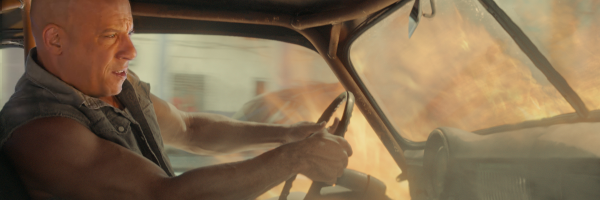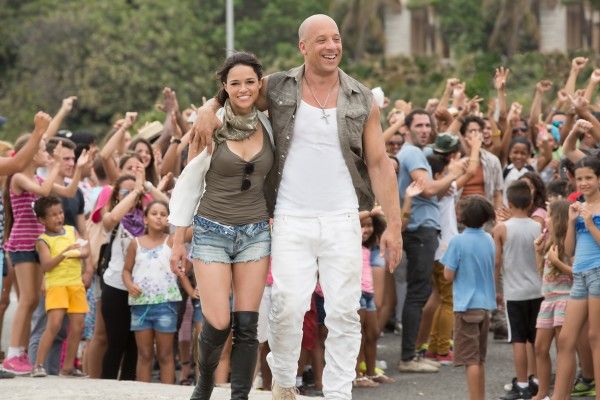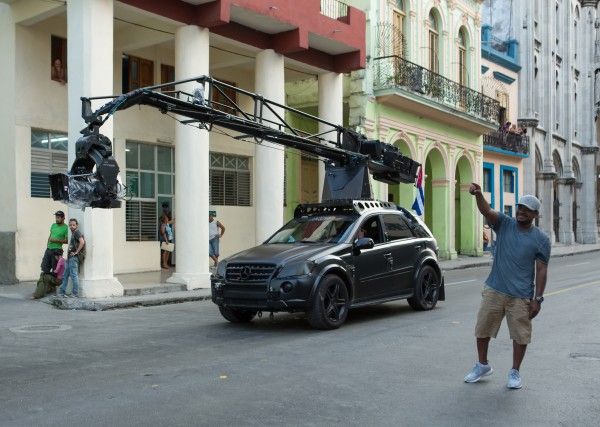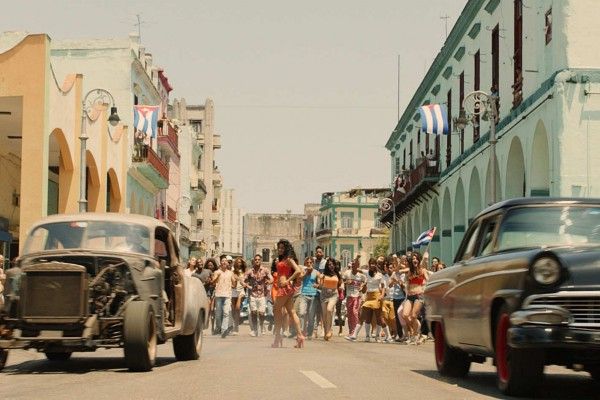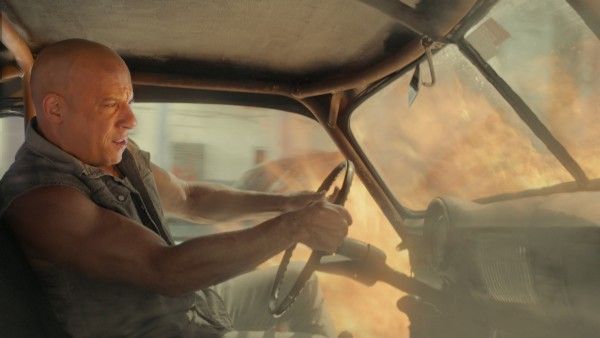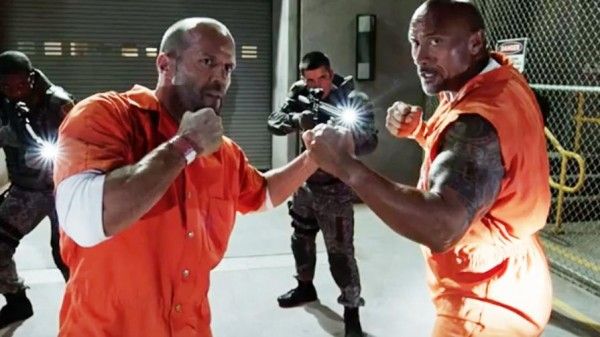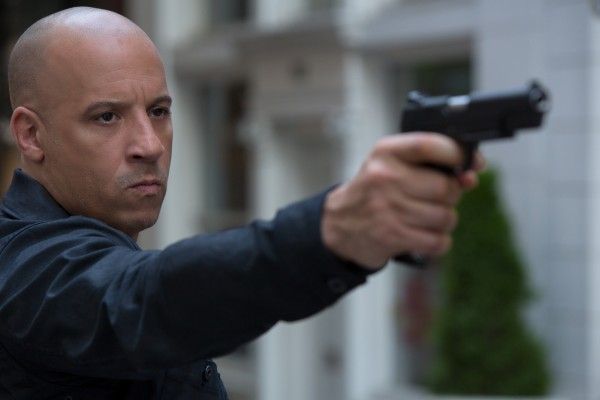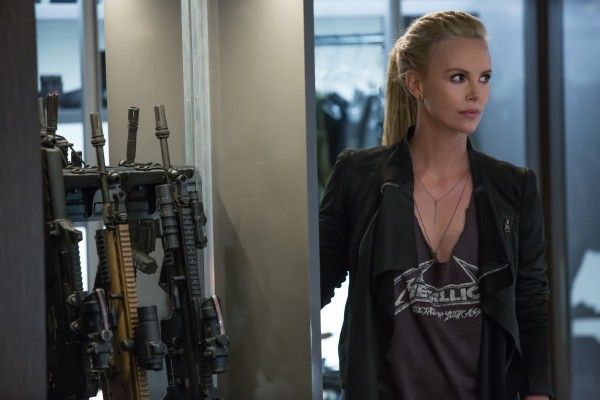Havana, Cuba is home to some of the richest muscle car aesthetic on the planet. So it's no surprise that the folks behind the Fast and Furious franchise were among the first to roll through town after President Obama eased American travel restrictions to the long-embargoed nation in 2016. After all, nobody loves American Muscle more than Dom Toretto (Vin Diesel), the patriarch of the Fast family, whose globe-trotting adventures have raced to more than $5 billion at the worldwide box office.
The Furious films have been jet-setting around the globe ever since Justin Lin joined the fray and transported the action to the streets of Tokyo with 2006's sequel Tokyo Drift. Since then, the franchise has traveled to Brazil, Abu Dhabi, and now, Cuba, where Fate of the Furious and director F. Gary Gray (Straight Outta Compton) made history as the first American tentpole filmed in the streets of Havana in decades. Movie Magic has long transformed foreign countries into Havana. The 007 films headed to Puerto Rico and Spain for James Bond's Cuban adventures. Dirty Dancing: Havana Nights also used Puerto Rico as a double for Cuba, while The Godfather, Part II and Sydney Pollack's Havana were filmed in the Dominican Republic. To see Havana itself on-screen is rare, to see it in an American blockbuster is all but unheard of.
Naturally, that made for an ambitious and challenging shoot, but not necessarily in the ways you'd expect. According to Richard Klein of McLarty media, who served as the film's international political supervisor with who I chatted with in Havana where we toured the filming locations, both the American and Cuban governments were in full support of the production. "[The Cuban government] knew the film franchise, knew how popular it was around the world, and knew that it came with no controversy. There's nothing political, there's nothing sensitive," he said. "The American government wanted this to happen and succeed, because it represented the change in tone between the two countries, the fact that you could work together and succeed together, and again, it wasn't political."
As they say, the devil is in the details, so while the production was set in motion with support and enthusiasm, the biggest challenges arose in the form of complex, nuanced laws and on-the-ground practicalities. "They're not difficult," said Klein. "They just take time." Above all, infrastructure and equipment were the biggest hurdles that had to be cleared. "They clearly don't have the infrastructure to support a movie of this size," Gray recalled when I caught up with him on the phone earlier this month. "We're bringing in big-time actors and hundreds of crew and the technology we needed in order to shoot a tentpole movie. We brought in everything. I think we brought in everything from helicopters to a bottle of water."
Klein echoed those sentiments, "We had to bring everything. Because the technical needs of this movie are so extreme. Car chases, crashes, explosions, aerial photography. We had to bring everything. We floated a barge from Florida to carry everything. So on the one hand, it's making sure you have everything. And it's also, because of everything you're bringing, you have to make sure you're declaring it on both ends, so people know what's coming in and what's gone out."
As if filming in Cuba wasn't going to be challenging enough on a technical level, the Furious films are known for some of the biggest blowout action scenes in the biz, and the production in Havana was no different. Gray and his team sent cars barreling down the narrow alleys at 100 mph, they raced a car backward along the Malecón, closing down the streets to capture the action. "This would have been so much easier if it was a Woody Allen movie, with four characters, walking around the city," said Klein said with a laugh. "We brought the mother of all films down here, to learn on. Right? Car chases, crashes, explosions, stunts, helicopters. That was a big, big challenge for everybody."
And they did it all for a few minutes of screen time, designed to open Fate of the Furious with a bang. "It was a massive logistical undertaking unto itself," said Gray. "Just that sequence itself, only because the resources manpower and effort with all the effort we put into shooting in Cuba, I think it matches with what people put into shooting a full, feature-length film."
But once you're in Havana, it's immediately clear that the ambiance is worth the effort. It's the perfect setting for a Furious film. You may expect to see a handful of Vintage cars in Havana. You might have the misconception that the postcard pictures of the city selectively pick and choose the vehicles. In truth, the revamped muscle cars are everywhere, and like Fate tells us, they're treated as heirlooms passed down the generations, lovingly maintained with coats of mismatched paint and it whatever it takes to keep the engine running. Occasionally you'll see more modern cars from recent decades sprinkled throughout traffic, but at every turn, down every alley, you'll see the vintage vehicles. "You see 1950s Chevy's here the way you see Toyota Corollas at home," Klein explained, "It's like one out of every three cars."
It was also the perfect follow-up to Furious 7's massive international set piece, which saw Vin Diesel and Paul Walker driving full-speed through the Etihad Towers in Abu Dhabi. Havana offered a complete change of pace; a city with new texture and character to add to the franchise. "Abu Dhabi's all glass and steel," Klein explained. "What's the opposite end of that? We started having conversations about, sort of older, colonial, classic but also really weathered and cities with texture. And Havana was very early in the conversation of beautiful, colonial city that kinda hasn't been developed in 50 years."
If that cultural texture was unusual and historic when they shot it, it may ultimately prove to be something of a preserved moment in time now that the current administration has decided to reinstate some of the pre-Obama travel restrictions. "What we did was rare and now, it's even more rare," said Gray.
Looking toward the future of the franchise, which will no doubt travel to more exotic and richly textured locales, Klein has a dream destination in mind -- the old city of Jerusalem. "I think that these narrow alleys and this mid evil architecture and these locations that are 1500 years old and are beautifully preserved." As for franchise star Tyrese Gibson, who I also spoke with in Havana, he wants the films to end up in Africa at some point. "I think it's time to travel to Cape Town, Johannesburg. We've done well in the Latin community. We've done well in the Middle East with Abu Dhabi. I think it's about time we take us to Cape Town and Jo-burg and really tap into that energy over there. I would love to do it, so I'm going to keep campaigning for it."
"You know, after Abu Dhabi and after Havana," said Klein, "the challenge is, what's the location that becomes a character in the movie?"
The Fate of the Furious is now available on Digital HD, 4K Ultra HD, Blu-ray, DVD and On Demand from Universal Pictures Home Entertainment.

